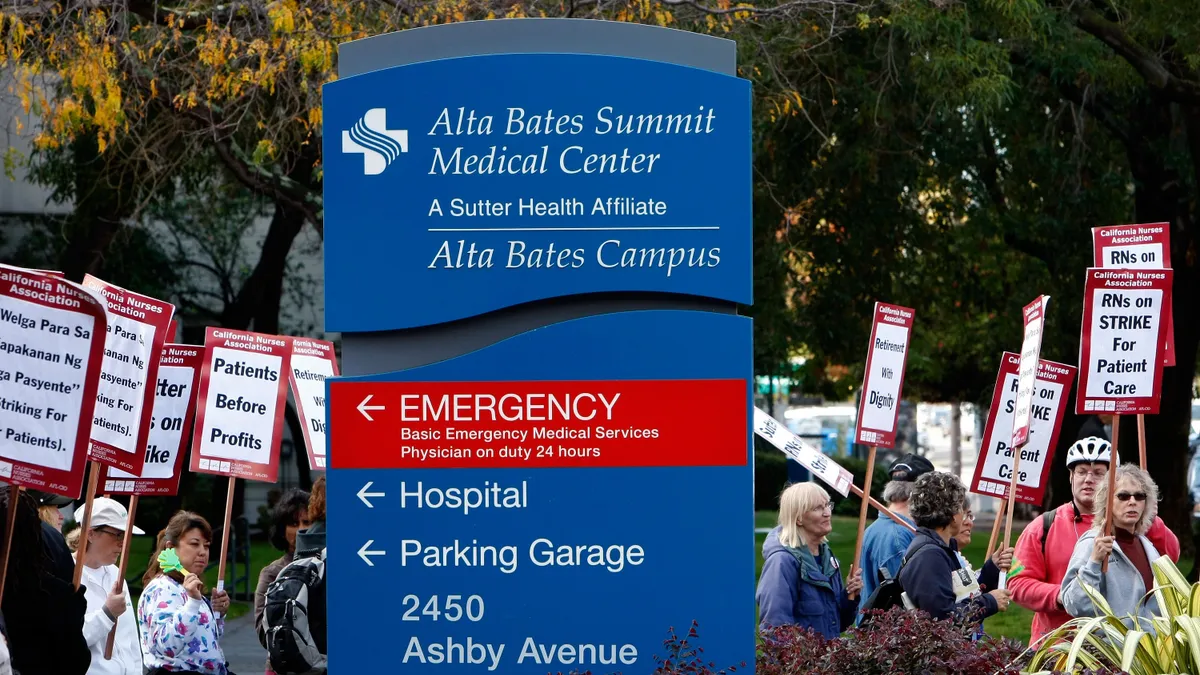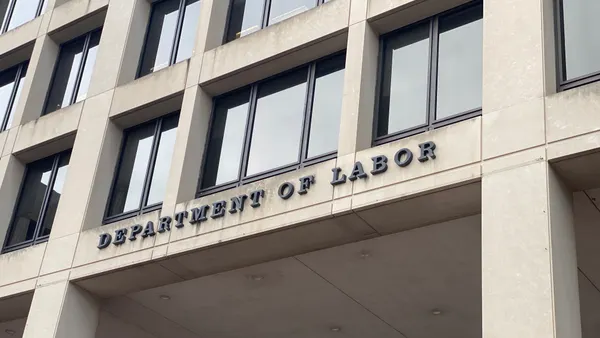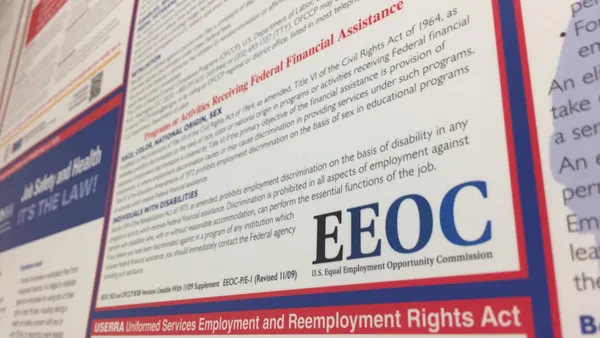Dive Brief:
- The rate of union petition filings has exploded since October 2021, according to a recent release from the U.S. Department of Labor. From the beginning of October 2021 to the end of June 2022 — the first nine months of the agency’s fiscal year — the National Labor Relations Board received 1,892 petitions, a 58% rise over the same time period the previous fiscal year. “By May 25, FY2022 petitions exceeded the total number of petitions filed in all of FY2021,” DOL noted.
- The number of unfair labor practice charges has increased in tandem, although not as dramatically; people filed 12,819 charges during the first three quarters of FY22, up from 11,082 in the same period of FY21, for an increase of 16%.
- The increased demand on the agency comes “during a period of critical funding and staffing shortages,” DOL said in the release. While funding has remained steady over the years, it has dropped 25% in real terms after adjusting for inflation, the agency said. DOL has also suffered staff attrition regionally and nationally. President Joe Biden’s FY2023 budget requested a 16% budget increase, DOL said.
Dive Insight:
It seems the fire lit by labor organizers last October continues to rage.
Overall, union membership in the United States is low compared to past decades; the U.S. Bureau of Labor Statistics found that 10.8% of the working population belonged to unions by the end of 2021, the vast majority of whom were public-sector workers (33.9% of whom are unionized, compared with 6.1% of private-sector workers). In 1983, the first year such data became available, the union membership rate was 20.1%. With the rise in recent filings, however, union membership rates could be on the upswing.
Starbucks, Amazon and Apple are some of the high-profile companies contending with union petitions. Since the first three stores filed petitions less than one year ago, Starbucks in particular has seen an explosion in organizing; more than 150 stores have voted to unionize across more than half the U.S., with more than 100 petitions pending. Notably, petitions have succeeded far more than they’ve failed, suggesting attempts to discourage workers from voting for a union are falling flat — at least where Starbucks is concerned.
Some companies, like Microsoft, are exploring a different line of action; the company in June said it would adopt an “open and constructive” approach to organizing, telling employees they did not need to unionize to be heard, but that they had a legal right to do so and Microsoft would respect that.
The spike in unionizing has been fostered by a confluence of events, experts previously told HR Dive, few of which have changed drastically since last year — COVID-19, a labor shortage and burnout among them. The pressure of inflation is unlikely to be helping matters.
Employers are planning big pay raises for 2023, though they may not be enough to offset a union’s negotiating power. Employers who have been lackadaisical toward talent may want to develop their listening skills if they hope to forestall organizing, one attorney previously told HR Dive.













